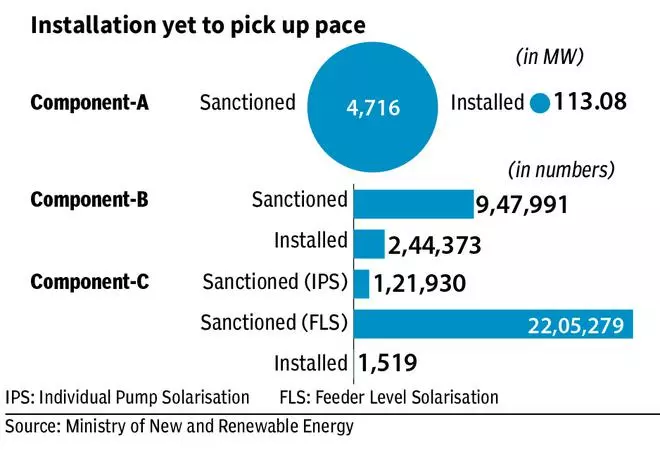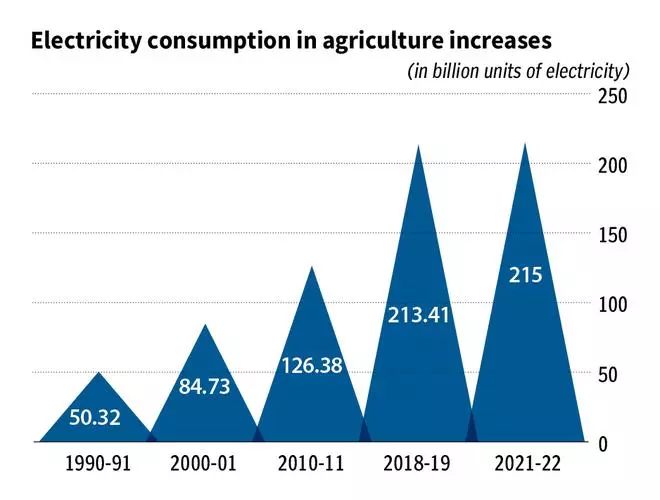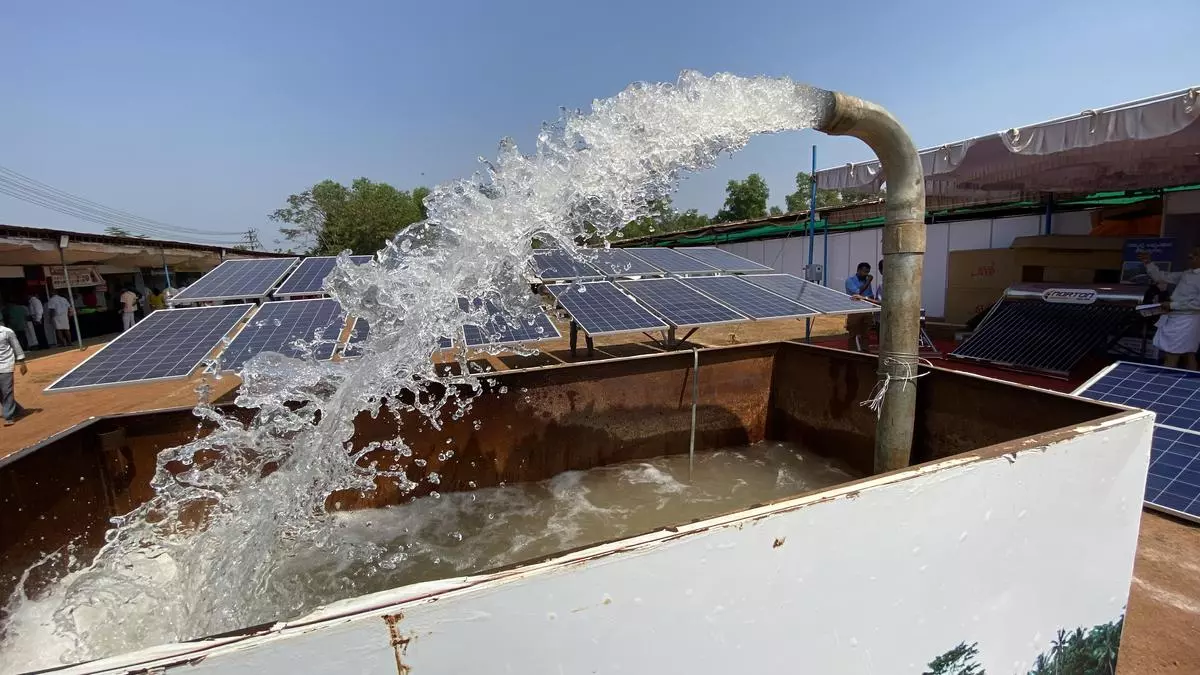Data Focus: KUSUM should bloom to make farmers smile
While many farmers in India are in a tight spot due to their reliance on electricity for crop irrigation, Shubhangi Gore from Osmanabad district in Maharashtra is unfazed because she has chosen to install a solar water pump for her agricultural needs.
To ensure energy and water security for farmers, de-dieselise the farm sector, and reduce environmental pollution, the government of India had launched the PM-KUSUM (Pradhan Mantri Kisan Urja Suraksha evam Utthaan Mahabhiyan Yojana) scheme in 2019. The first component of the scheme targets to generate 10-GW capacity through the installation of small solar power plants each of capacity up to two MW on the barren/fallow land of farmers. But scant progress has been done in this segment. As per the available data, out of the sanctioned capacity of 4,716 MW, only 113.08 MW have been installed by June this year.
The second component of the scheme targets installation of 20 lakh standalone off-grid solar water pumps. However, only 9,47,991 pumps have been sanctioned, out of which only 26 per cent (2,44,373) have been installed across the State.
The third component of the scheme is about solarisation of 15 lakh existing grid-connected agriculture pumps and through feeder level solarisation. Here too numbers are dismal with only 1,519 installations having taken place.

Rising demand
Speedier implementation of this scheme is important to reduce farmers’ dependence on power and diesel.
The agricultural demand for electricity typically decreases during the monsoon season due to higher soil moisture, leading to reduced requirements for irrigation. However, this year’s erratic monsoon has left farmers in a challenging situation.

The annual electric consumption of over 220 lakh grid-connected agriculture pumps installed in the country is around 213 billion units, which is 18 per cent of the total electricity consumption. According to the government data, 11 major DISCOMS of the country consume 95 per cent of electricity consumption on agriculture and annually provide over ₹1-lakh crore as electricity subsidy for agriculture.
This subsidy comes from the State’s exchequer. The aggregate subsidy amount on account of electricity for the agricultural needs of the country has been rising over the years.
The solar pumps will also help farmers weather power cuts. In August this year, the nation’s power consumption surged by more than 16 per cent, reaching a total of 151.66 billion units compared with the same month last year. As electricity demand is rising, power cuts are back in villages. In many villages in Maharashtra, electricity is only available between 11 p.m. and 6 a.m., leaving villagers without power throughout the day.
Accelerating the scheme
Nearly 80 lakh pumps out of approximately three crore agricultural pumps installed in India are diesel pumps.
When implemented fully, PM-KUSUM will lead to an annual reduction in diesel consumption of 1.38 billion litres per annum, thus reducing the import bill on account of petroleum products.
Suresh Nakhate, who collaborates with farmers to facilitate government schemes in Beed, acknowledges the fantastic nature of the PM-KUSUM initiative. However, he points out that there are several on-the-ground implementation challenges that need simplification to streamline the process.
